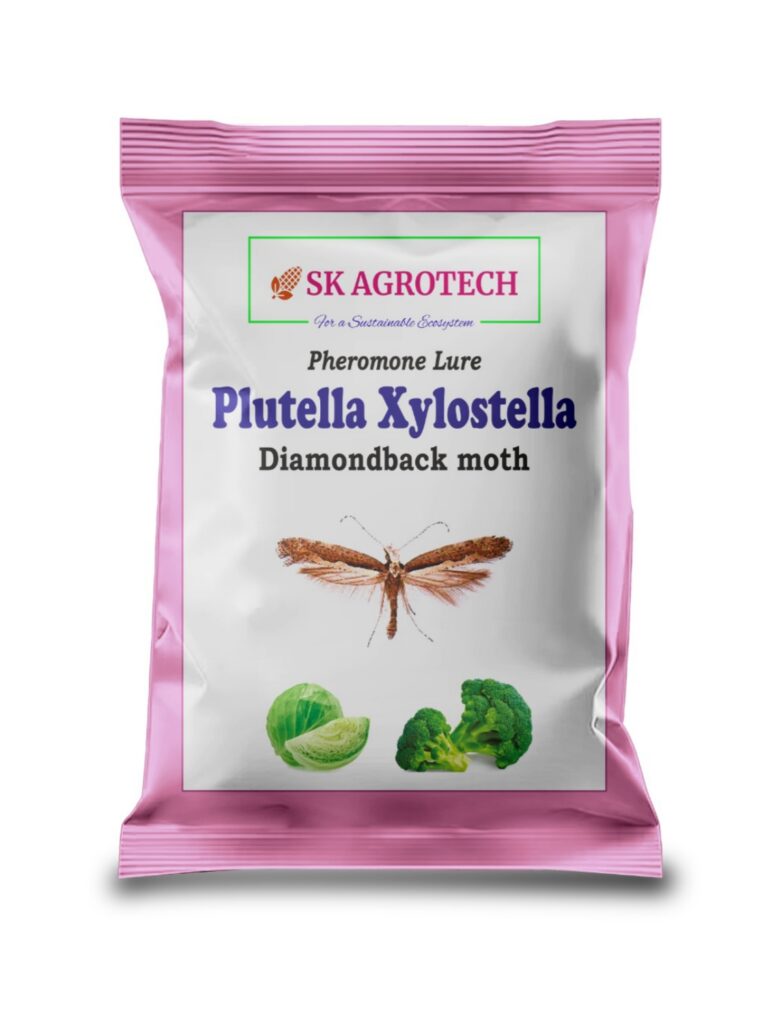Products

Diamondback Moth (Plutella xylostella) pheromone lure
Diamondback Moth (DBM) is a globally significant pest of cruciferous vegetables, particularly cabbage, cauliflower, broccoli, and mustard. The larvae feed on leaves, causing heavy defoliation, reduced head quality, and economic loss. DBM is notorious for developing resistance to chemical pesticides, making pheromone trap monitoring and IPM (Integrated Pest Management) the most reliable approach to sustainable control.
Host Crops:
Cabbage
Cauliflower
Broccoli
Mustard
Radish
Kale
Turnip
Other cruciferous crops (Brassicaceae family)
Damage Symptoms:
Irregular holes in leaves (window-paning effect)
Skeletonized leaves in severe infestation
Larvae seen actively feeding on underside of leaves
Small green caterpillars wriggling when disturbed
Stunted growth and poor head formation in cabbage/cauliflower
👉 Severe infestation can lead to 30–80% yield loss, especially in unsprayed or poorly managed fields.
Pest Lifecycle:
Eggs laid on leaf surface in small clusters
Larvae (caterpillars) feed on leaves for 7–10 days
Pupation occurs on leaves or plant debris
Adults are small, brownish-grey moths with diamond-shaped patterns on folded wings
🕒 The life cycle completes in 14–21 days depending on weather conditions. Multiple generations occur in a single season.
Monitoring & Control Using Pheromone Traps:
✅ Recommended Trap Type:
Delta Trap with sticky insert
Wota-T Trap (weather-resistant dry trap)
✅ Lure Type:
Plutella xylostella sex pheromone lure
✅ Trap Density:
4–5 traps per acre for monitoring
Monitor weekly for population trends
Start trapping 15–20 days after transplanting
🟢 Early detection allows timely biocontrol or selective pesticide use, reducing unnecessary spraying.
Other IPM Strategies:
🌱 Cultural Control:
Rotate with non-cruciferous crops
Remove and destroy crop residues after harvest
Use pest-free seedlings
🐞 Biological Control:
Release Trichogramma chilonis (egg parasitoid)
Apply Bacillus thuringiensis (Bt) sprays
Use neem-based bio-insecticides
⚠️ Chemical Control:
Apply only when pest population crosses Economic Threshold Level (ETL)
Use selective insecticides with mode-of-action rotation to delay resistance
Avoid indiscriminate pesticide use, especially in early crop stages
Why Use Pheromonetrap.in Traps for DBM Control?
Precision-targeted lures for Plutella xylostella
UV-stabilized and rain-resistant traps
Sticky inserts for accurate monitoring
Ideal for organic, GAP, and IPM-certified farms
Cost-effective and farmer-tested across India
